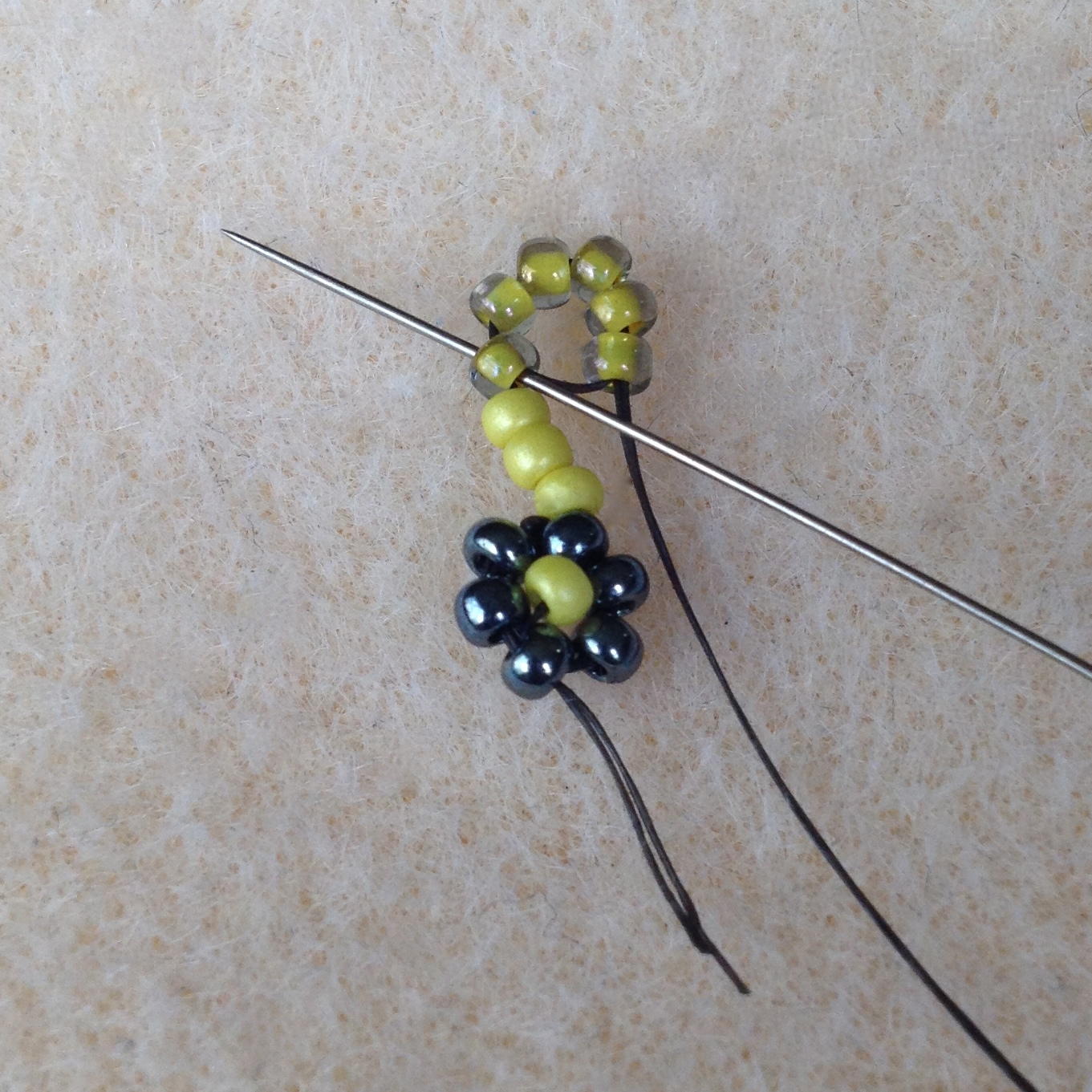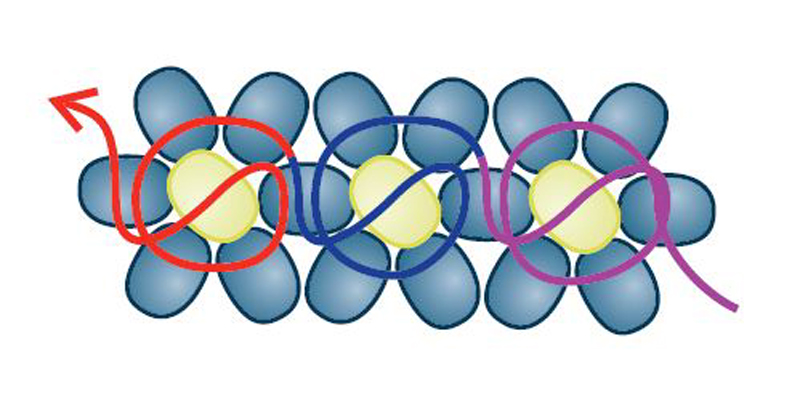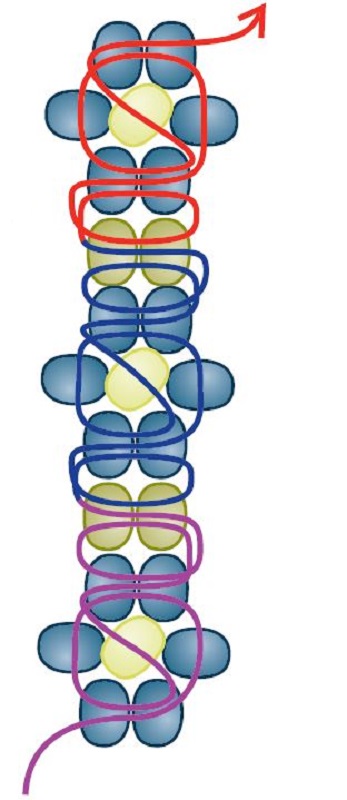Stitch Tips: Daisy Chain

When you ask a fellow beader which stitch they learned first, the answer is often that they learned daisy chain— sometimes from their grandmother or at summer camp. There’s no doubt why it’s one of the first stitches people try since it’s certainly one of the easiest, fastest, and prettiest stitches out there. That doesn’t mean daisy chain isn’t sophisticated, however. The stitch has many variations; it can be done in a chain or stitched in rows, and the opportunities for embellishment are vast.
For those of you who aren’t familiar with this stitch, I’ll get you started with this basic version that truly shows off the individual “daisies.”
MATERIALS & TOOLS
- Seed beads in 3 contrasting colors (blue, green, and yellow size 11° seed beads shown here)
- Beading thread in color to match seed beads
- Scissors
- Size 10 beading needle
How to Create Daisy Chain Stitch
1. Use 3′ of doubled thread to string 6 blue beads, leaving a 4″ tail; tie a knot with the working and tail threads to form a tight circle and exit from the first bead strung (Photo 1).

2. String 1 yellow bead and pass back through the blue bead opposite the one you’re currently exiting. This should seat the yellow bead firmly in the center of the ring of blue beads (Photos 2 and 3).

3. String 3 yellow beads and 6 green beads; pass through the green beads again (Photo 4). Note: As you can see here, I like to pass through all of the green beads once more after stringing them because it makes the chain stronger and more shapely, but if you’re in this for speed, you can certainly skip that extra pass through and simply go through that first green bead once to form the loop.

4. Pull the thread tight to form a loop. Pass through the first green bead strung (Photo 5).

5. String 1 yellow bead, pass back through the fourth green bead strung (opposite the last one exited) in the previous step, and pull tight (Photos 6 and 7).

6. Repeat Steps 3–5 to reach the desired length, alternating green and blue beads for the “daisies.”


Try These Daisy Chain Variations!
There are several variations to daisy chain. Here are two that make lovely chains for necklaces or bracelets:
CONTINUOUS DAISIES
Instead of adding strands of beads between the daisies, make a chain with connecting daisies: String 6 blue beads and pass through them again to form a circle, exiting the first bead strung. String 1 yellow bead and pass back through the opposite bead from the last one exited (Fig. 1, purple thread). *String 5 blue beads and pass through the last blue bead exited. String 1 yellow bead and pass back through the blue bead opposite the one that connects the last 2 daisies (Fig. 1, blue thread). Repeat from * to the desired length (Fig. 1, red thread).

SQUARE-STITCHED DAISIES
In this version, separate the daisies with blocks of square stitch: String 6 blue beads and pass through them again to form a circle, exiting from the first 2 beads strung. String 1 yellow bead and pass back through the 2 blue beads that sit opposite the last 2 blue beads exited. String 2 green beads; pass through the last 2 blue beads exited and the 2 green beads just added (Fig. 2, purple thread). **String 2 blue beads; pass through the last 2 green beads exited and the 2 blue beads just added. String 4 blue beads; pass through the last 2 blue beads exited. String 1 yellow bead; pass back through the third and second blue beads last added. String 2 green beads; pass through the last 2 blue beads exited and the 2 green beads just added (Fig. 2, blue thread). Repeat from ** to the desired length (Fig. 2, red thread).

—Jean Campbell Cox
JEAN CAMPBELL COX fills many of her off-hours with beads. In addition to teaching and designing beadwork, she is the author of several beading books and videos, including Jean Campbell’s Best Beading Workshops: Floral Designs and Global Designs.
This article was originally published in the April/May 2017 issue of Beadwork magazine. For more on bead weaving techniques, check out the Stitch Tips department in future issues of Beadwork magazine. Posted May 22, 2014. Updated February 24, 2018.
For more tips and tricks, go to the Interweave Store.










When I learned this in the 1970s it was with 8 beads around the center bead. Looking at these pics, I think I prefer that for two of these but I think I’ll give the continuous daisies a try with the 6 outer beads. I’ve done that with 8 beads but the six bead version is a different look. The thread doesn’t show up as much with that one as it does with the other two designs.